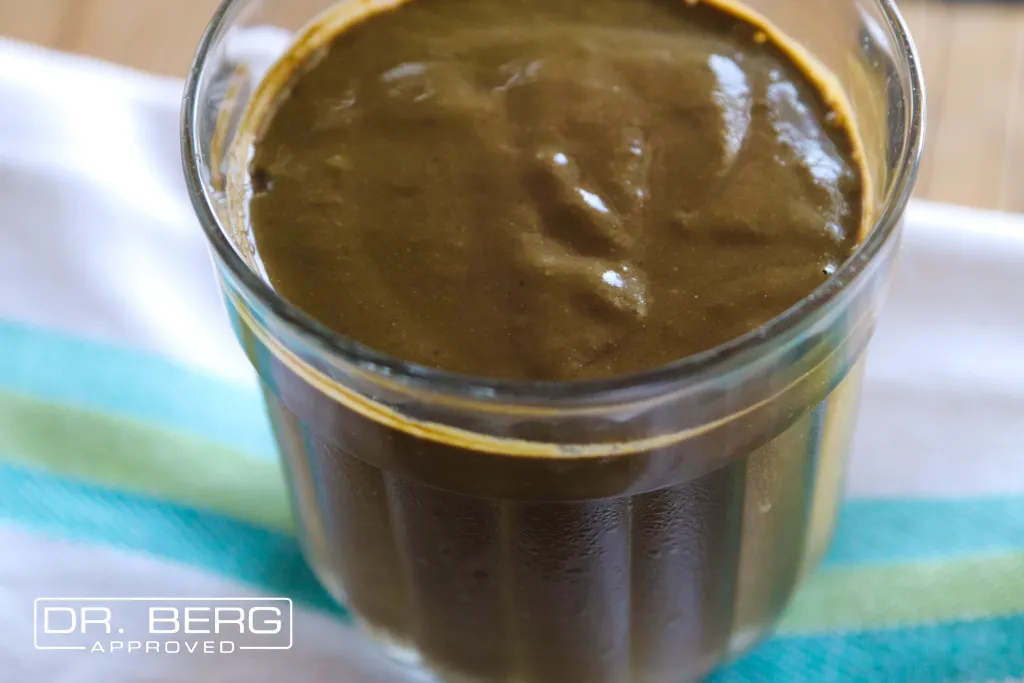At a glance
Oatmeal is a popular breakfast food made from oats, often praised for its fiber and texture. However, its high carbohydrate content can cause rapid spikes in blood sugar and insulin, especially when sweetened or processed. Oats may also contain gluten through cross-contamination and phytic acid, which can limit mineral absorption, making them less suitable for maintaining a balanced diet.
If you’re wondering why oatmeal isn’t good for you, the answer lies in its high carbohydrate content, which can quickly spike blood sugar levels.
Despite being a source of fiber, many types of oatmeal are highly processed and can interfere with weight loss and negatively impact metabolic balance.
Here’s why oatmeal isn’t a good option for those seeking to achieve weight loss and improve metabolic health, and discover nutritious breakfast alternatives.
What is oatmeal?
Oatmeal is a warm, porridge-like dish made from oats, a type of whole grain known for its dense texture and mild flavor.
It’s a popular breakfast choice, often prepared with water or low-fat milk and topped with fruit, nuts, or spices.
Oatmeal can be prepared using different types of oats, including rolled oats, which are steamed and flattened, or instant oats, which are pre-cooked and finely chopped to reduce cooking time.
Another popular variety is overnight oats, which are made by soaking raw oats in liquid overnight to soften them without cooking.
For a heartier texture and slower digestion, some prefer steel-cut oats, which are less processed and take longer to cook.
Some oatmeal products also include oat bran, the outer layer of the grain, which adds extra fiber and may enhance the cereal’s nutritional profile.
However, many people add sweeteners, such as maple syrup or use oat milk as a base, which can increase sugar intake, especially in flavored oatmeal or traditional cooked oatmeal options.
Although many believe that eating oats offers heart health benefits, the high carbohydrate content of oats, especially in instant or processed forms, can cause rapid spikes in blood sugar and insulin levels.
Over time, this may contribute to inflammation, weight gain, and metabolic imbalances, potentially undermining their perceived health advantages.
Watch this video to discover why oatmeal might not be as healthy as you think.
Why isn’t oatmeal good for you?
Oatmeal is widely regarded as a healthy breakfast staple, often chosen for its fiber content and its role in promoting digestive regularity.
However, despite its positive reputation, oatmeal may not always provide the health benefits it’s known for
Here are three reasons why you shouldn’t eat oatmeal.
1. Contributes to blood sugar imbalances
Although oatmeal is classified as a complex carbohydrate, it may still cause rapid spikes in blood sugar levels, particularly when consumed in processed forms.
A study published in The Journal of Nutrition showed that more processed oats, such as quick oats, instant oats, and thin oat flakes, lead to significant blood sugar imbalances and trigger excessive insulin release.1
The glycemic impact becomes even greater when oatmeal is topped with added sweeteners such as brown sugar, honey, or maple syrup.
Blood sugar fluctuations and elevated insulin levels are major contributors to metabolic imbalances, which are closely linked to an increased risk of weight gain, insulin resistance, and type 2 diabetes.
2. Gluten cross-contamination
While oats are naturally gluten-free, their safety for individuals with celiac disease is still debated.
A significant concern with oats is their frequent contamination with gluten-containing grains like wheat, barley, or rye during cultivation, harvesting, or processing, making them a potential risk for individuals with celiac disease or gluten sensitivity.
This has been confirmed by research published in Nutrition Review, which suggests that trace contamination of pure oats may be problematic for people with celiac disease.2
This highlights the need for careful sourcing, strict processing standards, and ongoing monitoring to ensure oats remain safe for those following a strict gluten-free diet.
3. May reduce nutrient absorption
“Oatmeal contains phytic acid, a natural compound found in many grains and seeds,” explains Dr. Berg. “While phytic acid serves as a storage form of phosphorus for plants, it can bind to essential minerals such as iron and zinc in the human digestive tract, reducing their absorption.”
This effect may be particularly concerning for individuals who rely heavily on oatmeal or other high-phytate foods as dietary staples, as it could contribute to nutrient deficiencies over time.

Is it important to eat breakfast?
While eating breakfast can be important, its value depends on life stage, personal preferences, and health goals.
Certain individuals feel energized by eating breakfast and lunch while skipping dinner, which can support mental focus and productivity earlier in the day.
Others may prefer to skip breakfast and eat lunch and dinner, especially if they follow an intermittent fasting routine or simply don’t feel hungry in the morning.
For children and those not aiming to lose weight, having three structured meals daily without snacks may better support steady energy and nutrition.
While morning meals are often associated with oat products and breakfast cereals, it’s essential to recognize that many are high in simple carbohydrates and may not support long-term satiety.
Choosing minimally processed low-carb options and avoiding added sugar can contribute to a lower risk of metabolic concerns, including those related to diabetes.

Healthy breakfast choices
Breakfast is often referred to as the most important meal of the day, believed to kickstart metabolic processes, provide energy, and set the tone for daily food choices.
Here are a few delicious low-carb breakfast alternatives with incredible nutritional value.
Chocolate Chia Smoothie
If you’re a fan of chocolate, this Chocolate Chia Smoothie is perfect for you. It’s packed with protein, fiber, and healthy fats to keep you satisfied until lunchtime.
Simply blend frozen berries, almond milk, cocoa powder, chia seeds, and Stevia for sweetness. This tasty treat is an excellent substitute for oatmeal and ideal for those on-the-go mornings.
Vegan Avocado Toast
Start your day with a healthy dose of good fats and essential vitamins with this Vegan Avocado Toast.
Mash a ripe avocado until smooth, then mix in fresh lime juice, finely chopped jalapeño, and a pinch of salt. Spread the mixture on Keto Bread, and enjoy with your favorite sugar-free beverage.
Keto Egg and Beef Breakfast Skillet
For those who prefer a savory breakfast, prepare this Keto Egg and Beef Breakfast Skillet.
This hearty dish is loaded with eggs, ground beef, spinach, and cheese. It’s a flavorful replacement for traditional breakfast skillets, often high in carbohydrates from potatoes or white bread.
Fluffy Keto Pancakes Recipe
Missing pancakes on Healthy Keto? Look no further than this Fluffy Keto Pancakes recipe.
These light and pillowy pancakes, made with almond flour, buttermilk, and eggs, are fantastic for a weekend breakfast or brunch. For added sweetness, top them with sugar-free syrup or fresh berries.
Key takeaways
- Oatmeal is a warm cereal made from oats, available in forms such as rolled, instant, or steel-cut, and often topped with fruits, nuts, or spices.
- While it’s praised for its fiber, processed or sweetened oatmeal can cause blood sugar spikes that may lead to metabolic imbalances.
- Nutritious low-carb breakfast alternatives include a Chocolate Chia Smoothie, Vegan Avocado Toast, and a Keto Egg and Beef Breakfast Skillet.
FAQ
1. Why isn’t oatmeal good for you?
Oatmeal can spike blood sugar levels, especially in processed forms, leading to energy crashes and increased hunger. It’s also often contaminated with gluten and may contribute to metabolic imbalances when consumed regularly with added sugars.
2. Does oatmeal cause nutrient deficiencies?
Yes, oatmeal contains phytic acid, which can bind to essential minerals, such as iron and zinc, reducing the body’s ability to absorb these nutrients.
3. Do oats cause gut inflammation?
Oats themselves don’t typically cause gut inflammation, but individuals with celiac disease or gluten sensitivity may react to them due to cross-contamination with gluten-containing grains during processing.
4. Is oatmeal gluten-free?
Yes, oatmeal is naturally gluten-free, but it’s at high risk of becoming cross-contaminated with gluten during processing. If you have celiac disease or a gluten sensitivity, it’s important to opt for certified gluten-free oats.
5. Is it better to eat eggs or oatmeal for breakfast?
Eggs are generally a better breakfast choice than oatmeal as they contain little to no carbohydrates and provide high-quality protein and healthy fats, which help keep you full and maintain stable energy.
In contrast, oatmeal is high in carbohydrates and can contribute to significant blood sugar and insulin spikes linked to poor metabolic health.
Sources
- https://www.sciencedirect.com/science/article/pii/S002231662200044X ?
- https://pubmed.ncbi.nlm.nih.gov/21294744/ ?


















